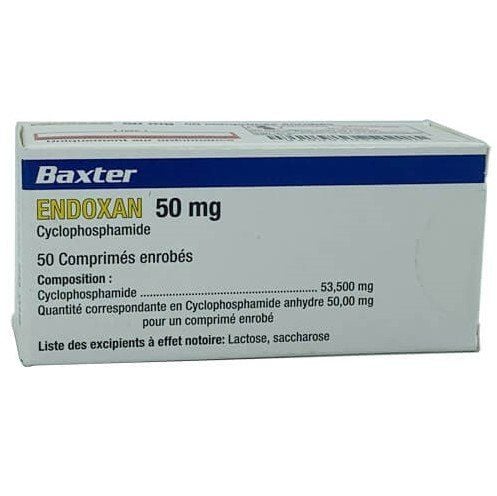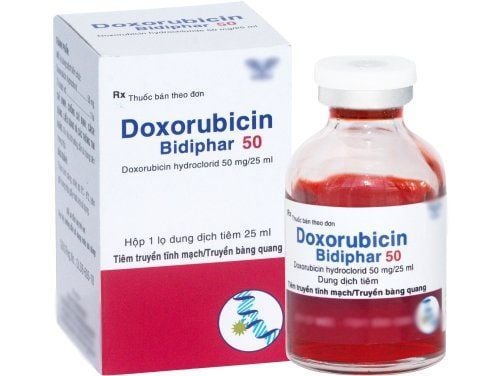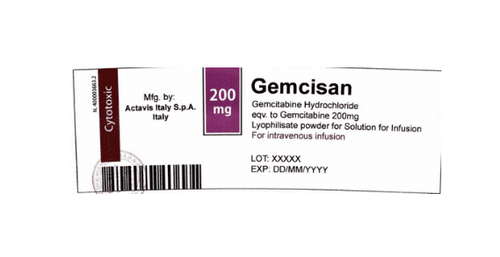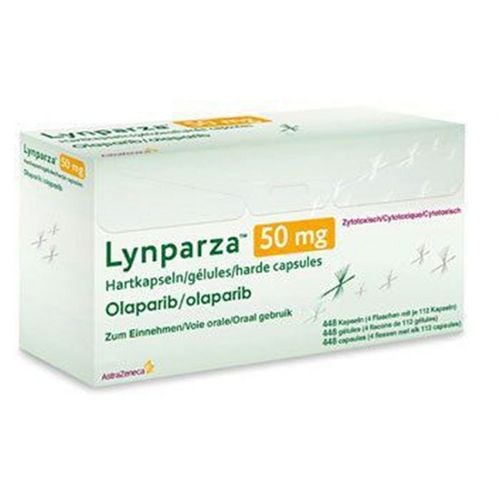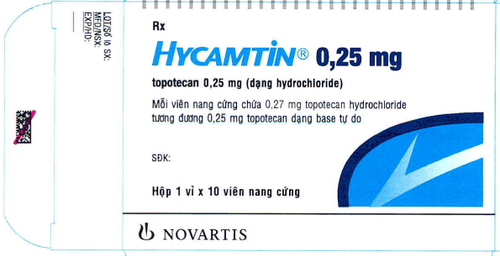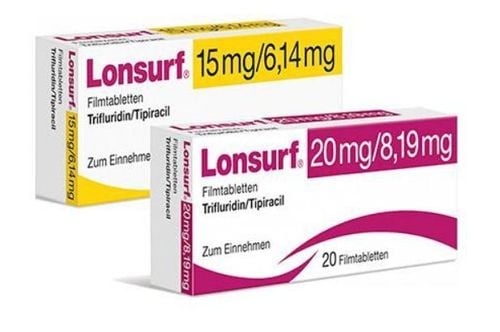This is an automatically translated article.
Anthracin is manufactured by the company Fresenius kabi Oncology Ltd, belongs to the group of drugs that fight cancer and affect the immune system. Refer to the article below for more useful information about Anthracin.
1. What is anthracin?
Anthracin medicine has the main ingredient containing the active ingredient Epirubicin HCl with a concentration of 50mg / 25ml, the drug is prepared in the form of an infusion solution, packing specifications: Box of 1 vial with a capacity of 25 ml.
2. Indications of Anthracin
Anthracin is indicated in the following cases:
Treatment for patients with advanced ovarian cancer, breast cancer, small cell lung cancer, stomach cancer. When anthracin is administered by the bladder, the active ingredient Epirubicin has been shown to be beneficial in the treatment of carcinoma in situ in bladder cancer, papillary transitional cell carcinoma of the bladder. In addition, the drug can also be used in the prevention of recurrence of bladder surface cancer after surgical resection of the urethra.
3. Usage and dosage of Anthracin
How to take Anthracin:
Anthracin is prepared in the form of an infusion solution, made by a doctor or qualified medical staff. It is recommended that patients do not arbitrarily use Anthracin at home without the supervision of a doctor. Anthracin is for intravesical or intravenous use only and must not be administered subcutaneously or intramuscularly because of its very strong tissue irritation potential. The dose of Anthracin should be based on the hepatic, renal, cardiovascular, hematological, clinical, tolerability responses as well as on the radiotherapy and chemotherapy methods that the patient is being used.
Use by intravenous infusion:
If Anthracin is used as monotherapy, the usual dose is 60 to 90mg/m2 of skin area, injected once and repeated after 3 weeks. This dose can be divided into 2 to 3 days if needed. Treatment in terminal cancer with a dose of 12.5-25mg/m2 of skin area, used once a week. Treatment of breast cancer after surgery with axillary lymph nodes: The initial dose should be 100 to 120 mg/m2 of skin injected on the first day of the cycle or divided into 2 equally divided doses and injected on day 1. and 8 of each treatment cycle, repeated every 3 to 4 weeks with this dose. After the first cycle of treatment, consideration should be given to adjusting the dose based on hematologic and non-hematological toxicity, if there is a decrease in platelets and neutrophils, the dose should be adjusted accordingly. In accordance with the condition, it may even be necessary to postpone the dose for the next cycle if the blood cell count is not satisfactory. In the treatment of other tumors: Anthracin is often used alone or in combination with other chemotherapy with the following doses: Treatment of advanced ovarian cancer: Single dose (60-90mg/m2), therapy combination (50-100mg/m2). Treatment of gastric cancer: Single dose (60-90mg/m2), combination therapy (50mg/m2). Treatment of small cell lung cancer: Single dose (120mg/m2), combination therapy (120mg/m2). Using the line into the bladder:
Treatment of bladder cancer: Carry out infusion of drugs into the bladder, every week use a dose of 50mg in 50ml of distilled water or 0.9% NaCl solution to get a solution with a high concentration. level 0.1% used for 8 weeks. If there are signs of chemical cystitis, reduce the dose every week to 30mg in 50ml. With topical carcinoma, the dose may be increased to 80 mg in 50 mL weekly if tolerated. To avoid recurrence in patients who have undergone transurethral resection of the tumor, use for 4 weeks at a dose of 50 mg/week. This was followed by a dose of 50mg/month and continued for 11 months. Solutions should be retained in the bladder for at least 1 hour after being injected. The combination of Anthracin with radiation therapy often increases cytotoxicity, so it is not recommended to combine radiation therapy with anti-cancer drugs. Radiation therapy will be deferred after chemotherapy has ended to avoid overlapping toxicity. Anthracin increases the toxicity of radiation in radiotherapy to cells.
4. Undesirable effects of Anthracin
During the use of Anthracin, in addition to common side effects such as: Cardiac toxicity and spinal cord compression, patients may also experience some other undesirable effects that have been recorded as follows:
Loss hair (usually reversible); Mucositis is usually stomatitis with painful sores, mainly under the tongue and along the lining of the tongue; Vomiting, nausea; Diarrhea, increased body temperature.
5. Anthracin drug interactions
Cemetidine increases the AUC of Anthracin by up to 50%, so Cemetidine should be discontinued during Anthracin treatment. Vaccine preparations containing attenuated bacteria or live bacteria should not be used in immunocompromised patients due to the use of Anthracin because it can cause severe infection, even death. .
6. Note when using Anthracin
The use of Anthracin is not indicated for the following subjects:
Patients with a history of hypersensitivity to Epirubicin, Anthracenedions, Anthracyclines or to any of the active ingredients in Anthracin. Not for use by pregnant women and nursing mothers. Do not use in patients with a neutrophil count less than 1.5 x 109/L. Anthracin should not be used intravenously in the following cases: severe liver failure, prolonged myelosuppression, severe myocardial failure, severe arrhythmia, myocardial infarction, unstable angina, cardiomyopathy, Acute systemic infection, acute inflammatory heart disease or prior treatment with the maximum cumulative dose of anthracin. Do not use Anthracin by the bladder in the following cases: Cystitis, urinary tract infection, hematuria, invasive tumor that invades the bladder, bladder shrinkage, related problems Regarding urinary catheterization, the residual volume of urine in the bladder is large. Precautions when using Anthracin:
Before treatment with Anthracin, the patient should be restored to acute toxicity such as: mucositis, stomatitis, thrombocytopenia, neutropenia, bacterial infection due to treatment. previous cytotoxic therapy. Cardiac toxicity is a risk during Anthracin therapy, which can manifest early (primarily ventricular tachycardia, ventricular extrasystoles, bradycardia, atrioventricular and bundle branch block) or late (cardiomyopathy). late: congestive heart failure, reduced left ventricular ejection fraction). Anthracin causes myelosuppression similar to other cytotoxic drugs. Hematologic parameters should be checked before and during each cycle of patients being treated with Anthracin. Anthracin causes vomiting in patients, it is necessary to consider prophylactic use of antiemetics before initiating Anthracin treatment in patients. In patients with impaired liver function, lower doses should be used. Patients with severe liver failure are not indicated to use Anthracin. Serum creatinine levels should be checked before and during anthracin administration. For patients with serum creatinine levels greater than 5 mg/dL, a dose adjustment is required. Use recommendations should be followed to minimize the risk of thrombophlebitis and phlebitis at the infusion site. Pulmonary embolism, thrombophlebitis or thromboembolism may occur with the use of Anthracin. Anthracin drugs are toxic to humans, so both male and female patients must use appropriate contraception during treatment with Anthracin. In addition, when administered by the bladder infusion, symptoms of cystitis may occur (such as nocturia, polyuria, painful urination, dysuria, bladder discomfort, hematuria, bladder wall necrosis) and bladder contractions.
7. Preservation of Anthracin
Store Anthracin in a cool, dry place, avoid direct sunlight or high temperature, because these agents can cause changes in drug ingredients, temperature Proper storage is below 30 degrees Celsius.




